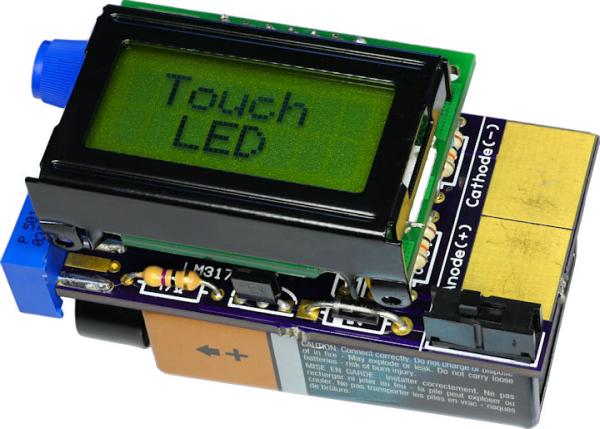Most projects include at least one LED. Before soldering the LED, how can you determine if the color and brightness meets your needs? After that, how do you calculate the correct value resistor?
Many years ago, I built a handy compact LED testing tool based on the LM317L adjustable current regulator. (You’ll definitely want to click on that link before continuing with this article.) It ended up being one of the most useful tools. In fact, the LED tester sits on a shelf above my keyboard, because I use the tester almost as often as I use my multimeter.

So, I decided to make an improved LED tester with LCD display!
LED Tester ready for an LED
This new tester has the same instant current-limiting feature of the original, along with a display that shows:
- The voltage of the LED
- The current limit in milliamps (adjustable by a trimpot)
- The desired target voltage (also adjustable by a trimpot)
- The calculated resistor value
LCD Display with voltage current and resistance
The adjustment trimpots are on the end of the tester. The trimpot with the thumb dial is to indicate the target circuit voltage (usually 5 V or 3.3 V). The other trimpot requires a screwdriver, because it controls current, which I usually want to keep at 20 mA.
Trimpots for setting voltage and current
A 9V battery sits beneath the main board. The total stack is relatively compact, but I am disappointed with the overall look. Maybe I’ll make an enclosed case and use surface-mount parts for the next revision.
Side view of LED Tester
I chose a 9V battery for many reasons:
- An alkaline battery produces from 9.6 V to 7 V throughout its lifespan. After subtracting the 1.5 V drop of the LM317 regulator, there is still plenty of voltage for modern LEDs.
- There is also plenty of voltage for the MCP1702 voltage regulator to produce a steady 5V for the microcontroller and LCD.
For more detail: LED Test Tool with LCD Display
